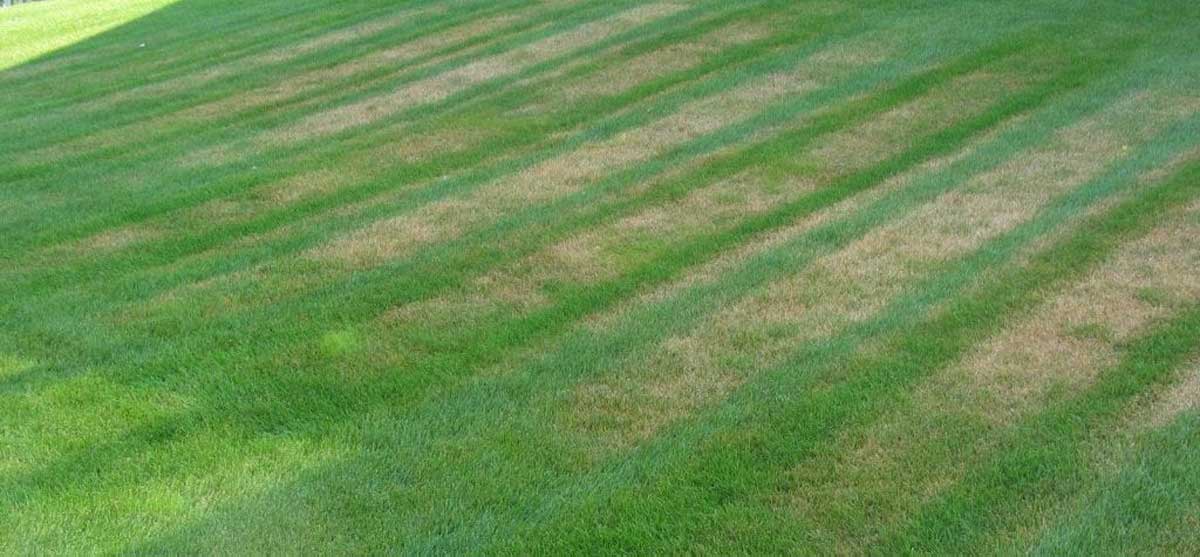Have you noticed something unusual with your lawn? Worried, confused and desperately looking for answers? Well, relax and use this detailed guide to help you identify and solve the problem. However, before we dive into the most frequent lawn diseases, we should start by highlighting a few key factors.
First, you should understand that when you grow plants of the same kind together, they’re prone to the dangers of lawn disease. In most cases, you’ll probably not notice anything wrong with your lawn until it’s too late.
Secondly, understand that even when you give your lawn the best care and attention even using organic lawn fertilizer, it may still get attacked by certain ‘notorious’ diseases leading to discoloration and death. With that in mind, let’s carefully talk about the 5 lawn diseases to look out for:
Brown Patch
Here’s one of those lawn diseases that you need to watch out for, especially during the hot summers. It normally comes in huge irregular discolorations that almost seem dead. At times, the inner patch might be slightly brighter than the outer part.
Another essential point to highlight is that if the condition is present for long, the inner part might heal leaving some sort of dead-grass ring surrounding it. In fact, in certain breeds of grass like the St Augustine, the outer section normally appears like a yellow ring.
Now, other than the Augustine grasses, this brown patch infection is known to attack the following:
- Bentgrass
- Tall fescues
- Perennial ryegrass
Red Thread Lawn Disease
This lawn disease loves cool and humid weather conditions like those seen in the North-western part of the Pacific. It’s also known to attack grasses grown in soil of little to no nutrients. So, how do you identify it?
Well, the first thing you should spot on the glass blades are extensions of red, thin strands. If this condition goes untreated, it’s sadly one of those yard diseases that can hurt your garden for years. The grasses usually affected are:
- Bluegrasses
- Bent grasses
- Bermuda grass
- Perennial ryegrass
Large Patch
The same pathogen is known to cause Brown patch is also behind this destructive disease. However, the symptoms are quite different from those of the brown patch. Interestingly, they appear in autumn or spring, especially when the conditions are moist and cool. These symptoms start with tiny baseball-sized spots which later spread into huge patches.
Once the disease is rapid and active, you’ll often see some off-colored turfs surrounding the patch’s edges. Spray your lawn with an efficient fungicide either in the fall or spring immediately you identify the disease. Lastly, remember that it commonly affects turf, warm-season, grasses like the Zoysia grass and Bermuda grass.
These have basic outfits that will never go out of fashion. Interestingly, you can combine them with anything in your closets.

Rust Diseases
The rust disease is one that you wouldn’t want to attack your beautiful lawn. You can easily spot it as it usually appears as light-green, irregular yellow patches. What’s more, it’s known to attack towards the end of summer or very early in the fall.
So, what should you do to prevent it? Well, start by giving your lawn enough ventilation if it’s in a shady area. The next step is to fertilize the soil as often as you can throughout the year. Keep a close eye on it if your lawn is of the following grasses:
- Zoysia grass
- Perennial ryegrass
- Kentucky bluegrass
The Summer Patch
Watch out for this disease between July and September when the humid conditions are high. This is mostly when the temperature is well past 85 degrees. Evidence of summer patch is seen in the form of brown-like, irregular, crescent-shaped patches and even rings.
Although highly unlikely, we’ve also had cases of this infection appearing in cool weather conditions. It’s, therefore, wise to keep monitoring your yard to avoid cases of summer patch from ‘sneaking up’ on you.
Now, once you discover that your lawn has been infected, don’t start panicking. Simply apply a reliable fungicide and you’ll have solved this awful problem. Finally, the predominantly affected grasses are those such as the:
- Fescues
- Annual bluegrass
- Bentgrass
- Kentucky bluegrass
Conclusion
The homemakerguide.com tells us that being a wise gardener means keeping proper care of your lavish lawn to prevent it from dying because of disease. Keep in mind that, in most cases, these lawn diseases appear and spread undetected. You’ll only discover that there’s something wrong with your lawn when it’s already too late.
Therefore, remember that “Prevention is better than cure,” to keep the beauty and radiance of your yard. Luckily though, some of these diseases are also easily controlled using an effective fungicide.
So, have you noticed either of them on your lawn? What measures did you take to get rid of the problem?

